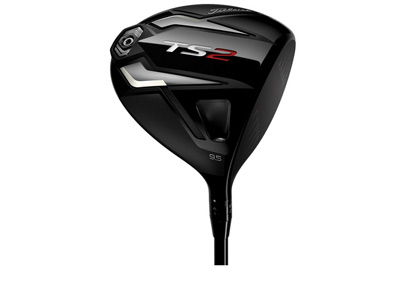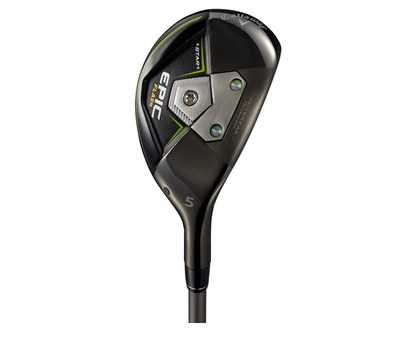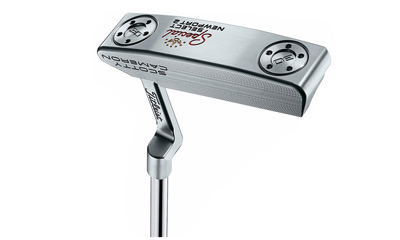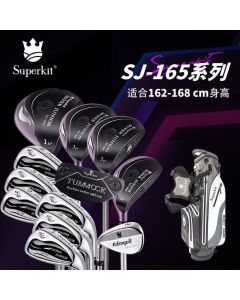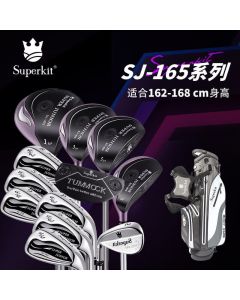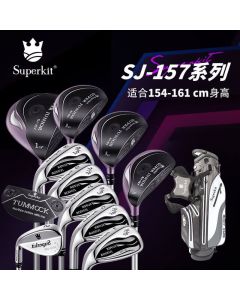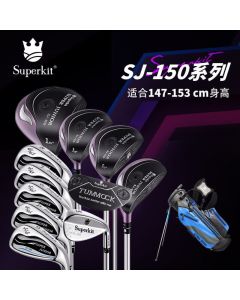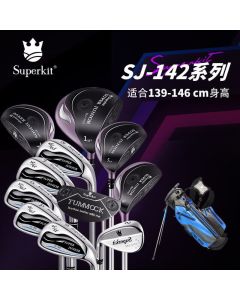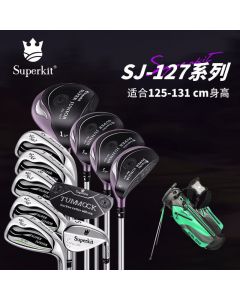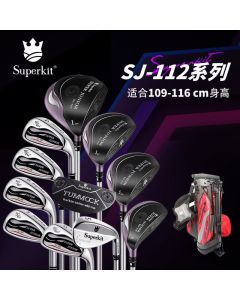Wood Head
1.The driver, commonly known as DRIVER, is a driving club. In principle, it is the farthest one in the whole set of golf equipment. The angle of inclination can be selected from 7 degrees to 13 degrees, but it should be noted that the smaller the angle, the farther you can hit, but the harder it is to hit the ball well. Generally speaking, due to the high center of gravity of the 1-wood, it is difficult for those with insufficient skill to drive, but those who play worse than the 3-wood are often seen on the golf course.
2.The 3-wood, commonly known as SPOON, is the one that hits the farthest on the fairway. However, there are many people who can't hit well with a 1-wood and switch to a 3-wood to tee off. Others, #4, 5, and 7 woods, are mostly used on longer fairways or tee shots.
3. Most people start to learn to play woods only after they have played very stable in the irons.
4. Like the iron head, the higher the hardness, the farther you can hit, but you need to pay the risk of palm injury.
5. The production of wood heads is much more difficult than iron heads. The reason is that the volume is relatively large, but the weight is lighter, and the length of the club is longer, and the impact strength is greater, so high-strength and light-weight materials are required.
6. Although persimmon wood and plywood wood feel good, they are slightly insufficient in strength, there is often a risk of breakage, and maintenance is not easy, so metal wood and composite wood will appear one after another. It has now been completely replaced.
7. The design of the center face distance (FaceProgression) is the same as the principle of the edge distance of the iron head. The larger the value, the higher the ball trajectory and the shorter the distance.
8. The center of gravity of the wood head has a great influence on the ball flight trajectory. The higher the center of gravity is, the higher the ballistic trajectory is, and the ball may even roll. The ballistic trajectory will be higher if the center of gravity is too far behind or too low.
9. The design of Backweight is to move the center of gravity of the wood head back.
10. The design principle of the bottom corner There are two types: low flat bottom (Elat) and round bottom (Radius).
Iron Head
1. The iron heads have different semicolons according to their different angles, and the semicolons are from No. 1 to No. 9 and WEDGE.
2. The balls hit by each semicolon have different ballistic trajectory and distance.
3. People who start to play generally start from #7 and #5. Because the bigger the number is, the bigger the angle is, and the shorter the pole length is, the easier it is to play. Therefore, the longer the club is, the longer the ball distance is, but the harder it is to play.
4.WEDGE is generally called cutting rod. It is a club that is used close to the green so that the ball can be cut close to the hole.
| Club Name | LOFT | LIE | BOUNCE | Ball Distance, Ballistic | Remark |
| PITCHING | 48°~ 52° | 63~64 | Around 10° | 100-yard fly ball | PW wedges |
| SAND | 54°~58° | 63~64 | Around 15° | 60-yard fly ball | SWSW Sand Pit Rod |
| THIRD | 57°~ 60° | 63~64 | Around 4° | CUT EDGE BALLS |
5. The material of the iron head is outlined as follows:
| Materialmateriai | hardness degree | Characteristic | Remark |
| Forging | soft- | Good ball control, good feel to the ball | Professional players choose this material |
| 304 stainless steel | soft+ | To replace forging material, no rust | High or low is not enough, and now few people use it |
| 431 stainless steel | hard- | Not deformed, not easy to break, cheap | The most widely used material |
6. The harder the material, the stronger the ball head, and the less likely it will be damaged. However, the greater the vibration force, the greater the chance of damage to the arm. As a result, the current development of ball head materials is all in the direction of quality, softness and strength, and the ball head with graphite carbon fiber inside stainless steel was developed under this goal.
7. The Cavity is designed to distribute the weight around the ball to increase the SeetSpot. For the ball head with no back pit design, the sweet spot of hitting is more concentrated at the center of gravity of the ball head.
8. The height of the center of gravity of the ball head affects the height of the ball's flight trajectory, so beginners should choose a ball head with a low center of gravity with a high trajectory.
9. The Oet-set also affects the ball flight trajectory. Therefore, the smaller the semicolon, the longer the distance is required, and the larger the Oet-set. distance is almost zero.
10. Bounce is designed to improve those who are easy to dig; on the contrary, Scoop is designed for those who often hit the top of the ball. These two angles are collectively called the bottom angle (SoleAngle).
